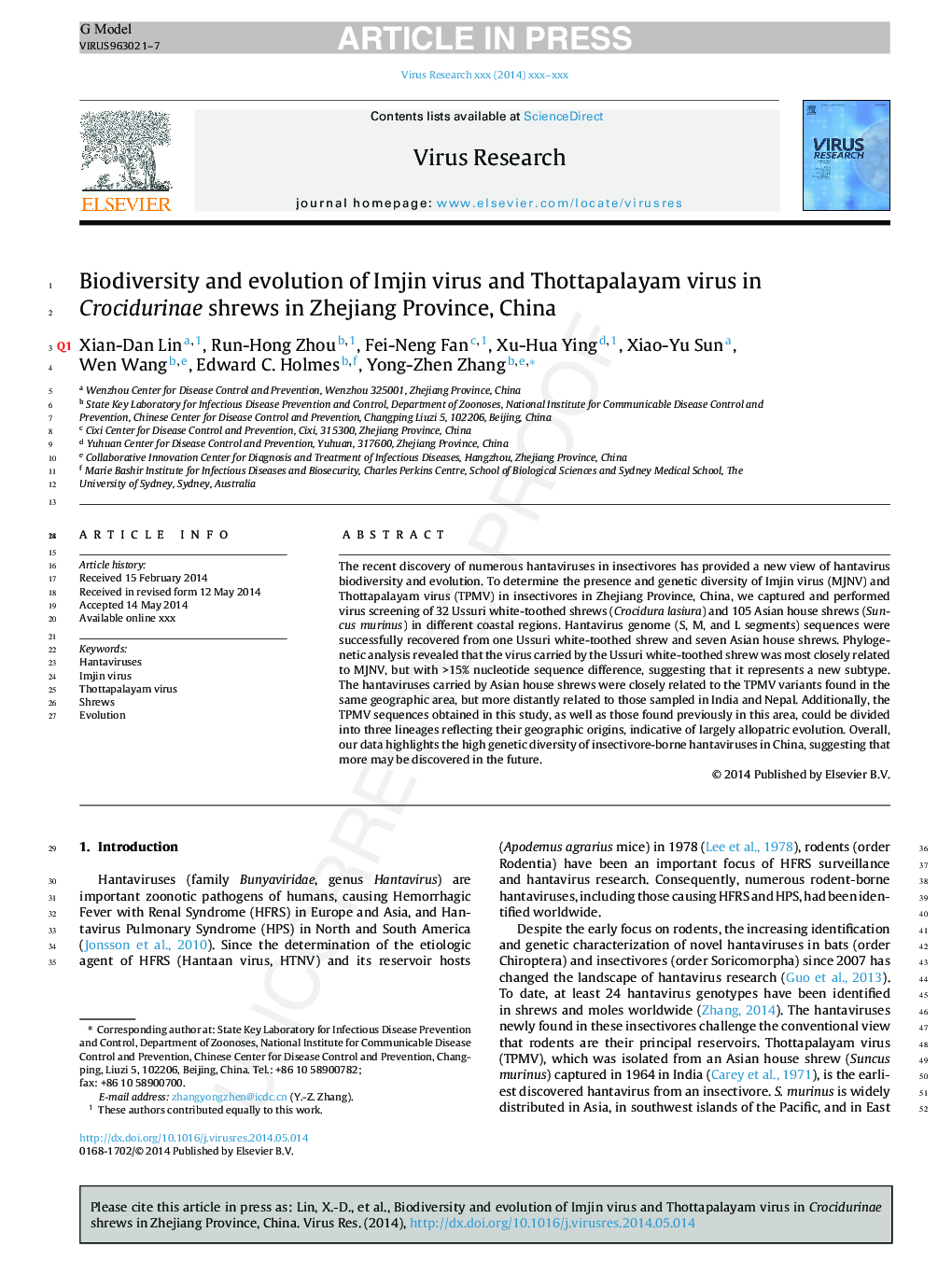| Article ID | Journal | Published Year | Pages | File Type |
|---|---|---|---|---|
| 6142494 | Virus Research | 2014 | 7 Pages |
Abstract
The recent discovery of numerous hantaviruses in insectivores has provided a new view of hantavirus biodiversity and evolution. To determine the presence and genetic diversity of Imjin virus (MJNV) and Thottapalayam virus (TPMV) in insectivores in Zhejiang Province, China, we captured and performed virus screening of 32 Ussuri white-toothed shrews (Crocidura lasiura) and 105 Asian house shrews (Suncus murinus) in different coastal regions. Hantavirus genome (S, M, and L segments) sequences were successfully recovered from one Ussuri white-toothed shrew and seven Asian house shrews. Phylogenetic analysis revealed that the virus carried by the Ussuri white-toothed shrew was most closely related to MJNV, but with >15% nucleotide sequence difference, suggesting that it represents a new subtype. The hantaviruses carried by Asian house shrews were closely related to the TPMV variants found in the same geographic area, but more distantly related to those sampled in India and Nepal. Additionally, the TPMV sequences obtained in this study, as well as those found previously in this area, could be divided into three lineages reflecting their geographic origins, indicative of largely allopatric evolution. Overall, our data highlights the high genetic diversity of insectivore-borne hantaviruses in China, suggesting that more may be discovered in the future.
Keywords
Related Topics
Life Sciences
Immunology and Microbiology
Virology
Authors
Xian-Dan Lin, Run-Hong Zhou, Fei-Neng Fan, Xu-Hua Ying, Xiao-Yu Sun, Wen Wang, Edward C. Holmes, Yong-Zhen Zhang,
